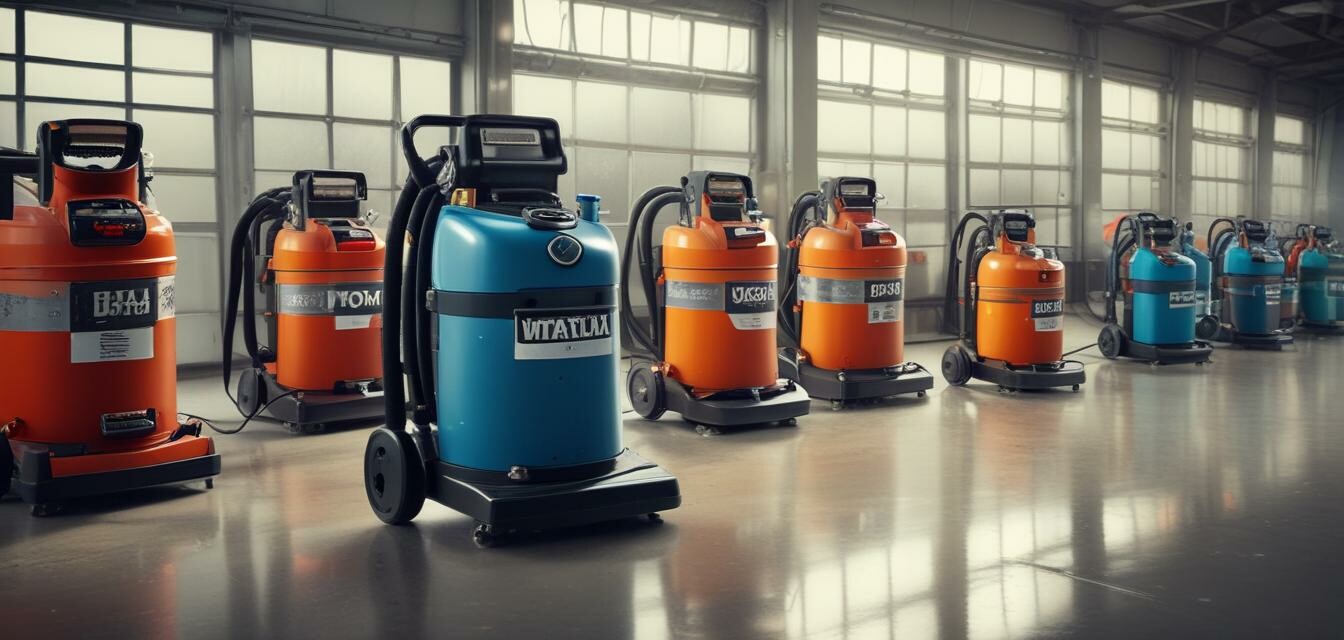
This article was generated using AI and is based on real customer reviews from the Amazon platform. It contains affiliate links, meaning we may earn a commission—at no extra cost to you. As Amazon Associates, we earn from qualifying purchases.
The Do’s and Don’ts of Industrial Cleaning
Key Takeaways
- Understand the specific cleaning requirements for industrial equipment.
- Utilize appropriate heavy-duty cleaning gear for optimal performance.
- Be aware of safety protocols to prevent accidents and injuries.
- Avoid common mistakes that can lead to equipment damage.
- Regular maintenance ensures the longevity of your cleaning equipment.
Industrial cleaning is a critical aspect of maintaining a safe and efficient working environment. Whether you're operating in a warehouse, manufacturing facility, or an industrial kitchen, adhering to proper cleaning practices is essential. This guide will provide valuable do’s and don’ts to enhance your cleaning operations.
The Do’s of Industrial Cleaning
When it comes to industrial cleaning, following best practices is essential for the effectiveness and safety of your cleaning process. Here are some essential do’s:
- Do assess the cleaning requirements: Before getting started, evaluate the type and level of cleaning needed. Different industries have different cleaning standards.
- Do use the right equipment: Invest in quality heavy-duty cleaning gear such as industrial vacuums and power washers that suit your specific needs.
- Do follow safety protocols: Always wear personal protective equipment (PPE) and ensure that the cleaning area is safe for all personnel.
- Do plan your cleaning schedule: Regular cleaning helps maintain a clean environment and prevents buildup of dirt and grime.
- Do maintain your cleaning equipment: Regular maintenance of your machinery will prolong their lifespan and ensure they operate effectively.
Essential Cleaning Equipment
Here’s a quick overview of essential equipment needed for industrial cleaning:
| Equipment | Description |
|---|---|
| Industrial Vacuums | Powerful vacuums designed for heavy-duty cleaning tasks. |
| Power Washers | High-pressure cleaners ideal for outdoor surfaces and heavy stains. |
| Floor Scrubbers | Machines designed to clean and scrub large floor areas efficiently. |
| Steam Cleaners | Effective for sanitizing surfaces without harmful chemicals. |
The Don’ts of Industrial Cleaning
While knowing what to do is crucial, understanding what to avoid is equally important. Here are the common don’ts in industrial cleaning:
- Don’t overlook training: Ensure that all staff members are trained properly on how to use the equipment and understand safety protocols.
- Don’t mix cleaning chemicals: Mixing different cleaning agents can produce harmful reactions and should be avoided entirely.
- Don’t use the wrong equipment: Using improper cleaning tools can damage surfaces and lead to ineffective cleaning.
- Don’t ignore maintenance: Failing to maintain your equipment can lead to breakdowns and inefficient cleaning results.
- Don’t forget to document your cleaning process: Keeping a log of cleaning schedules and methods can help improve future cleaning practices.
Common Mistakes to Avoid
Identifying mistakes early can save time and resources. Here are mistakes to look out for:
| Mistake | Consequence |
|---|---|
| Using insufficient cleaning supplies | Results in poor cleaning outcomes and wasted effort. |
| Ignoring equipment guidelines | Potentially damages equipment and increases safety risks. |
| Rushing the cleaning process | Leads to missed areas and inefficiency. |
| Overlooking peripheral areas | Dust and dirt buildup in neglected areas can become health hazards. |
Conclusion
By adhering to these do’s and don’ts of industrial cleaning, you can create a safer and more effective cleaning environment. Remember, using the right equipment and following safe practices not only improves cleaning efficiency but also extends the life of your machinery. For more information on cleaning gear, check out our Buying Guides or explore our News and Trends for updates in the industry.
Pros
- Enhances cleanliness and safety in industrial environments.
- Improves the lifespan of equipment through proper maintenance.
- Boosts productivity levels by creating a tidy work environment.
Cons
- Can be time-consuming without a proper schedule.
- Requires investment in equipment and training.
- Mistakes can lead to safety hazards if protocols are ignored.
Tips for Beginners
- Start small; focus on one area before expanding your cleaning schedule.
- Create a checklist of cleaning tasks to ensure nothing is overlooked.
- Invest in basic yet effective equipment to ease the cleaning process.